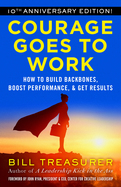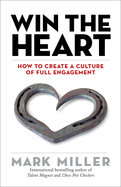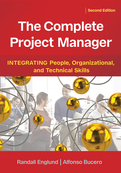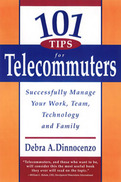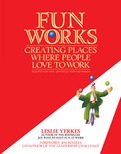Search Results: "Speaking Up"
Results 67-72 of 396
The most contaminated nuclear weapons plant in the country, Rocky Flats was an environmental disaster and the site of rampant worker unrest. Although estimates projected that cleaning up and closing the facility would take 70 years and $36 billion, the project was completed 60 years ahead of schedule and $30 billion under budget, and most of the site is now on its way to becoming a wildlife refuge. Kim Cameron and Marc Lavine explain how this amazing feat was accomplished and how other organizations can apply the same methods to achieve breakthrough levels of performance. The authors discovered that the Rocky Flats leaders used a distinctive “abundance approach,” identifying and building on sources of strength, resilience, and vitality rather than simply solving problems and overcoming difficulties. Drawing on numerous firsthand accounts and public records, they identify 21 specific leadership practices and key techniques that were fundamental to this innovative approach. This fascinating and thoroughly researched case study provides a complete guide for anyone wanting to better understand and apply the lessons of this remarkable, history-making achievement.
- By a coauthor of Developing Management Skills (over 150,000 copies sold)
- Tells the inside story of one of the most astonishing organizational successes of modern times: the shutdown and cleanup of the controversial Rocky Flats nuclear weapons plant
- Identifies specific practices, approaches, and techniques any organization can adopt to achieve extraordinary performance
Courage Goes To Work
2019
The hardest part of a manager's job isn't staying organized, meeting deliverable dates, or staying on budget. It's dealing with people who are too comfortable doing things the way they've always been done and too afraid to do things differently—workers who are, as author Bill Treasurer puts it, too “comfeartable.” Such workers fail to exert themselves any more than they have to, equating “just enough” with good enough. By avoiding even mild challenges, these workers thwart forward progress and make their businesses dangerously safe.
To combat this affliction, Treasurer proposes a bold antidote: courage. In Courage Goes to Work, he lays out a comprehensive, step-by-step process that treats courage as a skill that can be developed and strengthened. He Treasurer shows how managers can build workplace courage by modeling courageous behavior themselves, creating an environment where people feel safe taking chances and helping workers deal with fear.
To make the concept of courage more concrete, Treasurer identifies what he calls the Three Buckets of Courage: Try Courage, having the guts to take initiative; Trust Courage, being willing to follow the lead of others; and Tell Courage, being honest and assertive with coworkers and bosses. He illustrates each with a variety of vivid real-world examples and offers proven practices for helping your workers keep each bucket full.
Aristotle said that courage is the first virtue because it makes all other virtues possible. It's as true in business as it is in life. With more courage, workers gain the necessary confidence to take on harder projects, embrace company changes with more enthusiasm, and extend themselves in ways that will benefit their careers and their company. Courage Goes to Work is the first book to take a systematic approach to developing a vital but overlooked component of business success.
To combat this affliction, Treasurer proposes a bold antidote: courage. In Courage Goes to Work, he lays out a comprehensive, step-by-step process that treats courage as a skill that can be developed and strengthened. He Treasurer shows how managers can build workplace courage by modeling courageous behavior themselves, creating an environment where people feel safe taking chances and helping workers deal with fear.
To make the concept of courage more concrete, Treasurer identifies what he calls the Three Buckets of Courage: Try Courage, having the guts to take initiative; Trust Courage, being willing to follow the lead of others; and Tell Courage, being honest and assertive with coworkers and bosses. He illustrates each with a variety of vivid real-world examples and offers proven practices for helping your workers keep each bucket full.
Aristotle said that courage is the first virtue because it makes all other virtues possible. It's as true in business as it is in life. With more courage, workers gain the necessary confidence to take on harder projects, embrace company changes with more enthusiasm, and extend themselves in ways that will benefit their careers and their company. Courage Goes to Work is the first book to take a systematic approach to developing a vital but overlooked component of business success.
Win the Heart
2019
Every great company has an engaged workforce, and nurturing a culture of engagement is at the heart of great leadership—employees who really care about their work, their coworkers, and the organization can supercharge a company's success. But for many years, engagement has been suffering. Gallop reports that 70 percent of employees are not fully engaged on the job. Mark Miller draws on more than forty years of leadership experience to show leaders at all levels how to change the conversation and create real competitive advantage in the process.
In the fourth book in Miller's High Performance Series, CEO Blake Brown sets out to discover how to create the kind of workplace where everyone feels excited to come to work, passionate about what he or she brings to the company, and energized at the end of the day. It's a journey that takes him literally all over the world—from Italy to Greece to Green Bay and more. What he discovers from the pages of history is as relevant as the evening news.
Engagement unleashes untapped potential buried deep within the hearts of your people. An engaged workforce is more creative, more driven, and more enthusiastic about reaching company goals. If you put the lessons in this book to work, your people will never look at work, or their leaders, the same way again.
In the fourth book in Miller's High Performance Series, CEO Blake Brown sets out to discover how to create the kind of workplace where everyone feels excited to come to work, passionate about what he or she brings to the company, and energized at the end of the day. It's a journey that takes him literally all over the world—from Italy to Greece to Green Bay and more. What he discovers from the pages of history is as relevant as the evening news.
Engagement unleashes untapped potential buried deep within the hearts of your people. An engaged workforce is more creative, more driven, and more enthusiastic about reaching company goals. If you put the lessons in this book to work, your people will never look at work, or their leaders, the same way again.
“This is an important book; it is a necessary book. It comprehensively addresses the rapidly expanding role of the project manager, a role that is striving to keep up with the corresponding expansion in the definition of project success.”
—from the Foreword by Michael O'Brochta
This new edition of a classic, bestselling guide addresses the soft project management skills that are so essential to successful project, program, and portfolio management. Mastering leadership, negotiation, conflict resolution, change management, and organizational politics has always been key to project manager success. This book demonstrates the why and how of creatively applying soft project management skills in these areas and shows how to develop, adjust, and hone these skills given the forces and trends in today's business world.
Using real-world stories and case studies to model how to implement these skills, Englund and Bucero illustrate how the right mix of soft and hard professional skills can help create an environment that supports greater project success. This second edition features new sections on agile project management, ethics, business analysis, management across generations and between cultures, and more. It maps well to recent topic updates in the sixth edition of the Project Management Body of Knowledge.
This book is a valuable manual for all the complex interpersonal skills necessary for project managers' success and will help them develop a more complete portfolio of skills, knowledge, and attitudes to serve as road maps to greater project success.
—from the Foreword by Michael O'Brochta
This new edition of a classic, bestselling guide addresses the soft project management skills that are so essential to successful project, program, and portfolio management. Mastering leadership, negotiation, conflict resolution, change management, and organizational politics has always been key to project manager success. This book demonstrates the why and how of creatively applying soft project management skills in these areas and shows how to develop, adjust, and hone these skills given the forces and trends in today's business world.
Using real-world stories and case studies to model how to implement these skills, Englund and Bucero illustrate how the right mix of soft and hard professional skills can help create an environment that supports greater project success. This second edition features new sections on agile project management, ethics, business analysis, management across generations and between cultures, and more. It maps well to recent topic updates in the sixth edition of the Project Management Body of Knowledge.
This book is a valuable manual for all the complex interpersonal skills necessary for project managers' success and will help them develop a more complete portfolio of skills, knowledge, and attitudes to serve as road maps to greater project success.
Telecommuting-an increasingly common practice of working from home or away from a central office, while staying linked by phone and/or computer-has become a way of life for more than eleven million people in the United States, and the number constantly rises. But most books on the subject focus on its technological or administrative aspects rather than its human ones. What are the pros and cons of telecommuting for the legions of men and women that actually do it on a daily basis? And how can current or would-be telecommuters maximize their performance while minimizing their headaches?
In 101 Tips for Telecommuters, seasoned telecommuter Debra Dinnocenzo shares her practical, easy-to-implement "action tips" for making telecommuting as efficient and productive as possible. Written for full-time, occasional, and aspiring telecommuters, this helpful book covers everything from managing one's own time, balancing telecommuting with family demands, and working effectively with others from afar to networking the "virtual" way, getting a grip on technological overkill and even resisting the ever-beckoning refrigerator when working at home!
Dinnocenzo offers useful advice on special self-management factors to consider when telecommuting; how to keep in touch with all the people-coworkers, managers, support personnel, customers, and others-who make up your telecommuting world; and even how to nurture crucial ties with suppliers, vendors, and service providers.
In the new age of professional mobility, 101 Tips for Telecommuters is the perfect guide for the millions of Americans who want to succeed in this exciting and challenging new way of work.
In 101 Tips for Telecommuters, seasoned telecommuter Debra Dinnocenzo shares her practical, easy-to-implement "action tips" for making telecommuting as efficient and productive as possible. Written for full-time, occasional, and aspiring telecommuters, this helpful book covers everything from managing one's own time, balancing telecommuting with family demands, and working effectively with others from afar to networking the "virtual" way, getting a grip on technological overkill and even resisting the ever-beckoning refrigerator when working at home!
Dinnocenzo offers useful advice on special self-management factors to consider when telecommuting; how to keep in touch with all the people-coworkers, managers, support personnel, customers, and others-who make up your telecommuting world; and even how to nurture crucial ties with suppliers, vendors, and service providers.
In the new age of professional mobility, 101 Tips for Telecommuters is the perfect guide for the millions of Americans who want to succeed in this exciting and challenging new way of work.
-
A concise, user-friendly guide for telecommuters, written by a veteran telecommuting executive with more than a decade of first-hand experience as both a telecommuter and telemanager
-
Focuses on the myriad tasks and roles telecommuters must handle on a daily basis
-
Includes a Telecommuter Self-Assessment Checklist so readers can determine if telecommuting is right for them, a Telecommuter Start-Up Guide, and a Telecommuter Resource Guide to refer to whenever telecommuting gets tough
Fun Works
2007
In the first edition of Fun Works (over 30,000 copies sold) dozens of case studies with companies demonstrated the fundamental principles of fusing fun with work. In this revised 2nd edition, the Leslie Yerkes does a series of follow-up interviews to see how the original companies have changed or maintained their fun-based work environments across the last 5 years.Leading-edge organizations have discovered that fun can--and does--translate into bottom line success. By harnessing the power of fun, companies find they can better retain employees and customers, motivate teams, improve productivity, increase innovation, and create a sense of community.
Leslie Yerkes details precisely how eleven successful companies--including Southwest Airlines, Pike Place Fish, Isle of Capri Casinos, EmployEase, and Prudential--have integrated fun into the normal course of business. This new edition provides updates on how these same companies have grown, prospered, and continued to thrive--in spite of national tragedies, natural disaster, growing competition, and changing economic conditions--in part because of the culture they have created through what Yerkes calls "The Fun/Work Fusion."
Yerkes illustrates eleven principles--from capitalizing on the spontaneous to hiring good people and getting out of their way--that will inspire you to inject a sense of playfulness and joy into your workplace. Full of real-life examples, strategies, ideas, resources, tools, tips, and techniques, Fun Works will help any company in any industry become a place where people love to work.
- Proves that organizations can use fun to increase employee and customer retention, motivate individuals and teams, and improve overall productivity
- Completely revised and updated to show how the companies profiled in the first edition have continued to thrive by combining fun and work
- From the coauthor of the bestselling book on fun in the workplace, 301 Ways to Have Fun at Work (75,000 copies sold)



